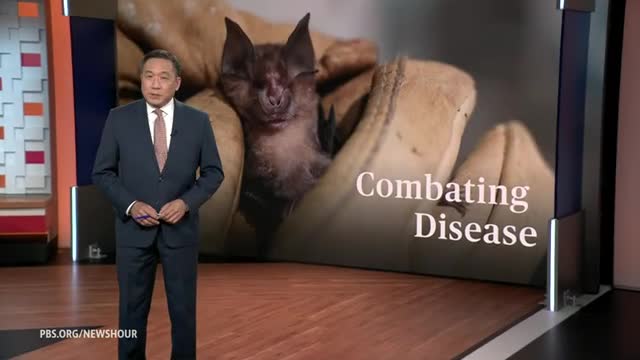Researchers find hope in battle against deadly bat disease
This article was created by AI summarizing key points discussed. AI makes mistakes, so for full details and context, please refer to the video of the full meeting. Please report any errors so we can fix them. Report an error »

For nearly two decades, North American bats have been under siege from a devastating disease known as white-nose syndrome, which has led to the deaths of millions of these crucial mammals. First identified in New York in 2006, the disease is caused by a fungus that manifests as white patches on the bats' skin. Researchers believe the pathogen originated in Europe, where local bat species have developed a resistance, but it quickly spread across the Atlantic, likely hitching a ride on a traveler’s gear.
The impact of white-nose syndrome has been catastrophic, with some bat populations declining by over 90%. Alarmingly, more than half of North America's bat species are now at risk of extinction. However, recent reports indicate a glimmer of hope as wildlife biologists explore innovative strategies to combat the disease.
One promising approach involves applying a nontoxic chemical spray in bat roosting areas, which effectively neutralizes the fungus and allows more bats to survive the winter. Another method being tested is the introduction of colder air into hibernation sites, which helps bats enter a deeper state of hibernation, making them less susceptible to the disease.
The ecological importance of bats cannot be overstated. They play a vital role in pollinating plants and controlling insect populations. The decline of bat populations has already led to increased insect numbers, prompting farmers to use more pesticides, which can have adverse effects on human health.
The spread of white-nose syndrome serves as a stark reminder of the interconnectedness of global ecosystems. Just as the disease traveled from Europe to North America, other pathogens can easily cross borders, underscoring the need for a coordinated global response to wildlife health threats. As researchers continue their efforts to save North American bats, the implications of their work extend far beyond the survival of a single species, highlighting the intricate balance of our shared environment.
The impact of white-nose syndrome has been catastrophic, with some bat populations declining by over 90%. Alarmingly, more than half of North America's bat species are now at risk of extinction. However, recent reports indicate a glimmer of hope as wildlife biologists explore innovative strategies to combat the disease.
One promising approach involves applying a nontoxic chemical spray in bat roosting areas, which effectively neutralizes the fungus and allows more bats to survive the winter. Another method being tested is the introduction of colder air into hibernation sites, which helps bats enter a deeper state of hibernation, making them less susceptible to the disease.
The ecological importance of bats cannot be overstated. They play a vital role in pollinating plants and controlling insect populations. The decline of bat populations has already led to increased insect numbers, prompting farmers to use more pesticides, which can have adverse effects on human health.
The spread of white-nose syndrome serves as a stark reminder of the interconnectedness of global ecosystems. Just as the disease traveled from Europe to North America, other pathogens can easily cross borders, underscoring the need for a coordinated global response to wildlife health threats. As researchers continue their efforts to save North American bats, the implications of their work extend far beyond the survival of a single species, highlighting the intricate balance of our shared environment.
View full meeting
This article is based on a recent meeting—watch the full video and explore the complete transcript for deeper insights into the discussion.
View full meeting